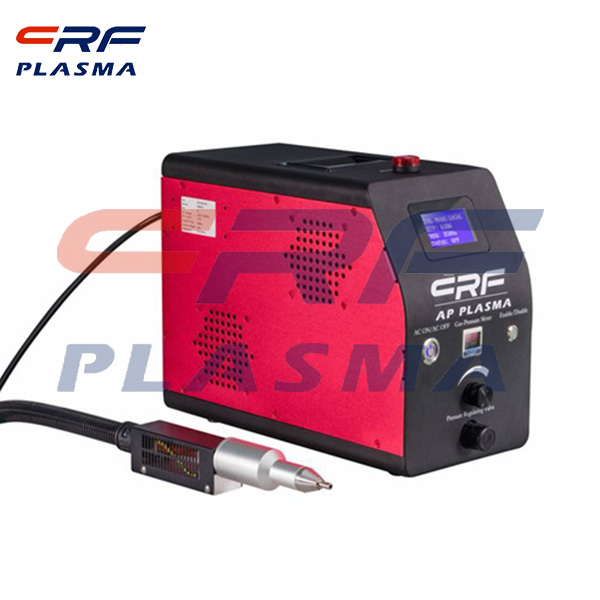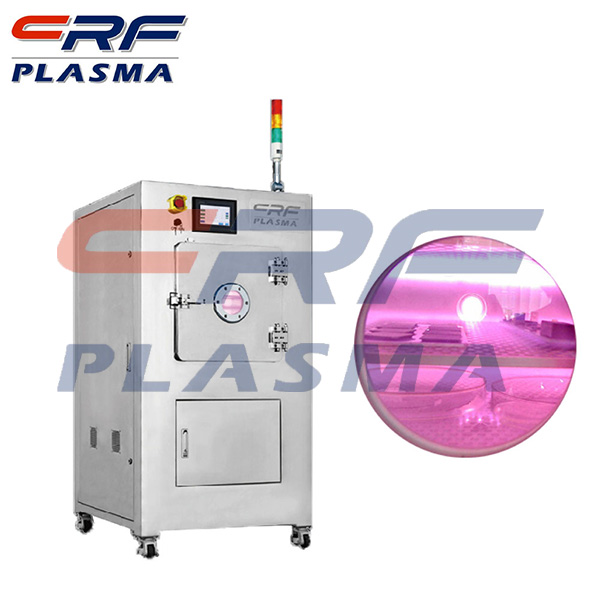
Welcome to Shenzhen Sing Fung Intelligent Manufacturing Co., Ltd.
E-mail:shaobo@sfi-crf.com
Plasma cleaning and UV light cleaning
- Categories:Technical Support
- Author:plasma cleaning machine-surface treatment equipment-CRF plasma machine-Sing Fung Intelligent Manufacturing
- Origin:
- Time of issue:2020-09-23
- Views:
(Summary description)Plasma introduction and its principles Plasma: Plasma is a form of matter composed mainly of free electrons and charged ions. It exists widely in the universe and is often regarded as the fourth state of matter, which is called plasma state, or "supergas", also known as "plasma". The e natural presence of plasma, including lightning and the Northern lights, is made up of electrons, ions, free radicals, neutral particles, and photons. The e plasma itself is an electrically neutral mixture of physically and chemically active particles. These active free radical particles can do chemical work, while charged atoms and molecules can do physical work by sputtering. Through physical bombardment and chemical reaction, plasma process can complete surface modification of various materials, including surface activation, pollutant removal, etching and other functions. Plasma technology: Removal of organic contaminants from metals, ceramics, and plastics to improve adhesion. Because glass, ceramics, and plastics are essentially non-polar, they require surface activation treatment prior to bonding, painting, and coating. Through surface activation, etching and surface deposition, plasma technology can improve the properties of most substances: cleanliness, hydrophilicity, adhesion, lubricity, wear resistance and so on. Principle of plasma cleaning: To a group of electrodes with radio frequency voltage (frequency is about a few MHZ), high frequency alternating electric field, formed between the electrode area gas under the ferment of alternating electric field, the formation of plasma, and the activity of plasma to be dual role, conduct physical bombardment cleaning and chemical reaction, make the surfaces to be cleaned substances into particles and gaseous substances, after discharge, vacuum cleaning and to achieve. Comparison between Plasma cleaning and UV light cleaning: different categories PLASMA cleaning UV light cleaning cleaning method chemical + physical oxidation reaction adaptive range treated with a variety of substrates not suitable for oxides energy big small after cleaning no damage no damage cleaning effect better good reliability high high surface cleaning uniformity higher consistent surface modification good good
Plasma cleaning and UV light cleaning
(Summary description)Plasma introduction and its principles
Plasma:
Plasma is a form of matter composed mainly of free electrons and charged ions. It exists widely in the universe and is often regarded as the fourth state of matter, which is called plasma state, or "supergas", also known as "plasma". The e natural presence of plasma, including lightning and the Northern lights, is made up of electrons, ions, free radicals, neutral particles, and photons. The e plasma itself is an electrically neutral mixture of physically and chemically active particles. These active free radical particles can do chemical work, while charged atoms and molecules can do physical work by sputtering. Through physical bombardment and chemical reaction, plasma process can complete surface modification of various materials, including surface activation, pollutant removal, etching and other functions.
Plasma technology:
Removal of organic contaminants from metals, ceramics, and plastics to improve adhesion. Because glass, ceramics, and plastics are essentially non-polar, they require surface activation treatment prior to bonding, painting, and coating. Through surface activation, etching and surface deposition, plasma technology can improve the properties of most substances: cleanliness, hydrophilicity, adhesion, lubricity, wear resistance and so on.
Principle of plasma cleaning:
To a group of electrodes with radio frequency voltage (frequency is about a few MHZ), high frequency alternating electric field, formed between the electrode area gas under the ferment of alternating electric field, the formation of plasma, and the activity of plasma to be dual role, conduct physical bombardment cleaning and chemical reaction, make the surfaces to be cleaned substances into particles and gaseous substances, after discharge, vacuum cleaning and to achieve.
Comparison between Plasma cleaning and UV light cleaning:
different categories
PLASMA cleaning
UV light cleaning
cleaning method
chemical + physical
oxidation reaction
adaptive range
treated with a variety of substrates
not suitable for oxides
energy
big
small
after cleaning
no damage
no damage
cleaning effect
better
good
reliability
high
high
surface cleaning uniformity
higher
consistent
surface modification
good
good
- Categories:Technical Support
- Author:plasma cleaning machine-surface treatment equipment-CRF plasma machine-Sing Fung Intelligent Manufacturing
- Origin:
- Time of issue:2020-09-23 11:21
- Views:
Plasma cleaning and UV light cleaning:
Plasma introduction and its principles
Plasma:
Plasma is a form of matter composed mainly of free electrons and charged ions. It exists widely in the universe and is often regarded as the fourth state of matter, which is called plasma state, or "supergas", also known as "plasma". The e natural presence of plasma, including lightning and the Northern lights, is made up of electrons, ions, free radicals, neutral particles, and photons. The e plasma itself is an electrically neutral mixture of physically and chemically active particles. These active free radical particles can do chemical work, while charged atoms and molecules can do physical work by sputtering. Through physical bombardment and chemical reaction, plasma process can complete surface modification of various materials, including surface activation, pollutant removal, etching and other functions.
Plasma technology:
Removal of organic contaminants from metals, ceramics, and plastics to improve adhesion. Because glass, ceramics, and plastics are essentially non-polar, they require surface activation treatment prior to bonding, painting, and coating. Through surface activation, etching and surface deposition, plasma technology can improve the properties of most substances: cleanliness, hydrophilicity, adhesion, lubricity, wear resistance and so on.
Principle of plasma cleaning:
To a group of electrodes with radio frequency voltage (frequency is about a few MHZ), high frequency alternating electric field, formed between the electrode area gas under the ferment of alternating electric field, the formation of plasma, and the activity of plasma to be dual role, conduct physical bombardment cleaning and chemical reaction, make the surfaces to be cleaned substances into particles and gaseous substances, after discharge, vacuum cleaning and to achieve.
Comparison between Plasma cleaning and UV light cleaning:
| different categories | PLASMA cleaning | UV light cleaning |
| cleaning method | chemical + physical | oxidation reaction |
| adaptive range | treated with a variety of substrates | not suitable for oxides |
| energy | big | small |
| after cleaning | no damage | no damage |
| cleaning effect | better | good |
| reliability | high | high |
| surface cleaning uniformity | higher | consistent |
| surface modification | good | good |

Scan the QR code to read on your phone

TEL:0755-3367 3020 / 0755-3367 3019

E-mail:sales-sfi@sfi-crf.com

ADD:Mabao Industrial Zone, Huangpu, Baoan District, Shenzhen


















